Suzuki GSX-R 1000 Service Manual: Electrical parts connector / coupler
- Faulty fi system is often related to poor electrical contact of connector/coupler. Before servicing individual electronic part, check electrical contact of the connector/coupler.
- When connecting a connector, be sure to push it in until a click is felt.
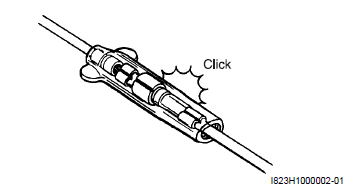
- With a lock type coupler, be sure to release the lock when disconnecting, and push it in fully to engage the lock when connecting.
- When disconnecting the coupler, be sure to hold the coupler body and do not pull the lead wires.
- Inspect each terminal on the connector/coupler for looseness or bending.
- Push in the coupler straightly. An angled or skewed insertion may cause the terminal to be deformed, possibly resulting in poor electrical contact.
- Inspect each terminal for corrosion and contamination. The terminals must be clean and free of any foreign material which could impede proper terminal contact.
- Before refitting the sealed coupler, make sure its seal rubber is positioned properly. The seal rubber may possibly come off the position during disconnecting work and if the coupler is refitted with the seal rubber improperly positioned, it may result in poor water sealing.
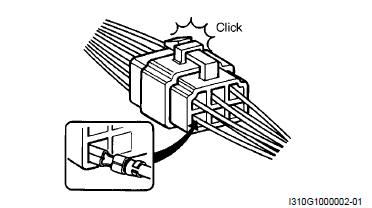
- Inspect each lead wire circuit for poor connection by shaking it by hand lightly. If any abnormal condition is found, repair or replace.
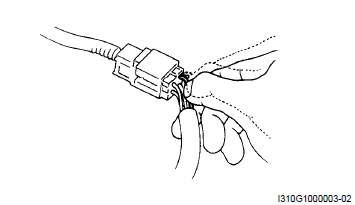
When taking measurements at electrical connectors using a tester probe, be sure to insert the probe from the wire harness side (rear) of the connector/coupler.
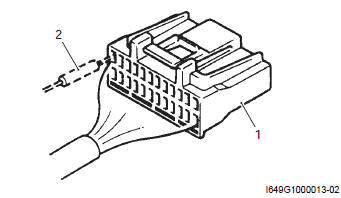
- Coupler
- Probe
- When connecting meter probe from the terminal side of the coupler (where connection from harness side not being possible), use extra care not to force and cause the male terminal to bend or the female terminal to open. Connect the probe as shown to avoid opening of female terminal. Never push in the probe where male terminal is supposed to fit.
- Check the male connector for bend and female connector for excessive opening. Also check the coupler for locking (looseness), corrosion, dust, etc.
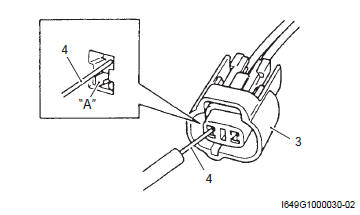
- Coupler
- Probe
- Where male terminal fits
- Avoid applying grease or other similar material to connector/coupler terminals to prevent electric trouble.
 Precautions for electrical circuit service
Precautions for electrical circuit service
When handling the electrical parts or servicing fi
system, observe the following points for the safety of the
systems. ...
 Clamp
Clamp
Clamp the wire harness at such positions as indicated in “wiring harness
routing diagram” in section 9a .
Bend the clamp properly so that the wire harness is
clamped securely.
...
Other materials:
Oil pressure switch inspection
Inspect the oil pressure switch in the following
procedures:
Note
before inspecting the oil pressure switch, check if the engine oil level
is correct. Refer to “engine oil and filter replacement” in section 0b .
Remove the left side cowling. Refer to “exterior parts removal ...
Pair system inspection
Pair hose
Lift and support the fuel tank with the prop stay.
Refer to “fuel tank removal and installation” in section 1g .
Remove the air cleaner box. Refer to “air cleaner box removal and
installation” in section 1d .
Inspect the pair hoses for wear or damage. If it is worn or da ...
Steering stem bearing removal and installation
Removal
Remove the steering stem upper bearing and steering stem lower bracket.
Refer to “steering / steering damper removal and installation” .
Remove the steering stem lower bearing inner race
using a chisel.
Remove the steering stem upper and lower bearing
races using ...
